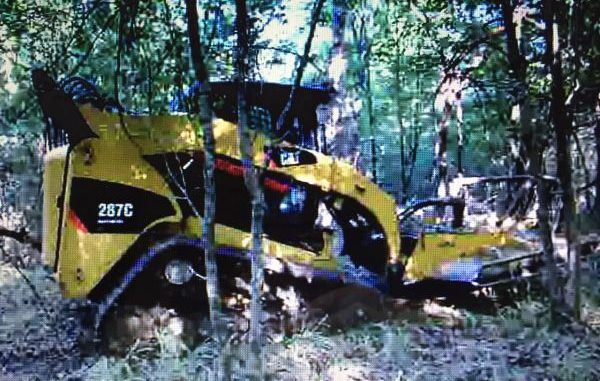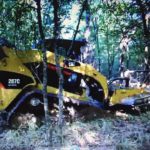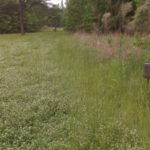
Use forest management to create deer cover
We now live in a digital high-tech world defined by acronyms of every stripe, but many of you might not be familiar with this particular one.
The letters “TSI” stand for timber stand improvement, which is basically an all-encompassing practice of forestry techniques aimed at improving overall forest condition.
And what forest landowner/land manager wouldn’t want to properly care for and maintain the trees on his or her property to someday produce a high-quality product?
The neatest thing about the TSI concept is that, when properly administered, the twin goals of quality timber production and quality deer habitat are not mutually exclusive.
Given the correct forester prescription, you can have improved cover and natural forage — including better mast production — in conjunction with higher ultimate timber yields and financial reward.
My recommendation would be to always consult a professional forester to evaluate your property and come up with a plan that is in sync with your ultimate goals. Tell your forester up front that wildlife habitat enhancement is an important parallel goal of yours.
If the forester is not well-versed in the wildlife aspects of TSI, you might need to also get a wildlife biologist involved to help guide the effort.
The various methods of applying TSI to a given property include a variety of mechanical and chemical techniques for cutting, thinning and/or eliminating undesirable trees and brush.
A balanced approach can be taken that not only results in improved health and growth rate of desirable trees but also emphasizes the creation of natural clearings and thickets, improves forest edge and builds brush piles.
When I say “natural clearings,” I am referring to forest openings that are in addition to food plots.
As a general rule of thumb, many wildlife professionals recommend there should be five to 10 acres of permanent natural clearings for every 100 acres of timberland — and they don’t mean just one five-or one 10-acre clearing.
The individual clearings should each range from one to a maximum of three acres in size. In the case of whitetail deer, I am certain that most if not all of you are aware that deer are primarily forest “edge users.”
Here is a quick math exercise that illustrates the concept of maximizing edge for use by deer. I will not bore you with the underlying details, but when you calculate and compare the amount of theoretical edge that exists when comparing one 10-acre circular clearing to five two-acre circular clearings, the results are startling.
A clearing represented by a circle 10 acres in size has a circumference or edge of 2,337 feet, while a total of five circular clearings, with each individual clearing being two acres in size equaling a total of 10 acres, has a total edge of 5,246 feet.
That’s more than double the amount of edge cover for the exact same total acreage. So when it comes to creating edge cover, several smaller clearings are much better than one or two large openings.
A forest edge is nothing more than the transition zone between the forest and any type of clearing, be it a natural clearing, a pasture or a food plot. A transition zone can range anywhere from being totally abrupt with no width to being transitional and gradual and be up to 30 feet in width.
A 30-foot-wide transition zone composed of brush, vines and shrubs is ideal.
Let me emphasize another point: The transitional edge concept is just as important when applied to existing food plots.
Clean, abrupt food plot edges are not at all desirable. In fact, most food-plot crops don’t grow as well along the plot edge due to shading.
The most-ideal thing you can do for your food plots is to create and maintain a 30-foot or wider transition zone between the forest edge and the open field.
Permanent forest clearings that are properly maintained can be high-quality food sources for wildlife. The caveat, however, is that in order to maintain clearings as great food sources, the clearings should be kept in early succession — meaning primarily young plants.
This can be easily accomplished by mowing, burning and using selective herbicides. I have used all three of these techniques over the years to great advantage.
To create holes or clearings in an otherwise forested area, you can use a chain saw, a bulldozer or a mulching machine. A drawback to using a bulldozer to remove undesirable trees and brush is that it is almost impossible to get the job done without skimming away at least a portion of the valuable topsoil layer.
I prefer and get quite a kick out of using a mulching machine to chip trees and vegetation when creating a woods road or clearing. Some cutting heads are capable of mulching brush and whole trees up to 15 inches around.
But you can also use some of the downed trees and brush to created brush piles that offer deer even more cover. When you cut down undesirable trees, saplings or heavy brush, just pile the slash together on the edges of the opening.
In a future article we will dive into the specifics of hack-and-squirt, hinge-cutting and prescription burning as they relate to TSI.
Next hunting season will be upon us before we even realize it, so let’s get moving and start improving our hunting properties to maximize our future opportunities.




